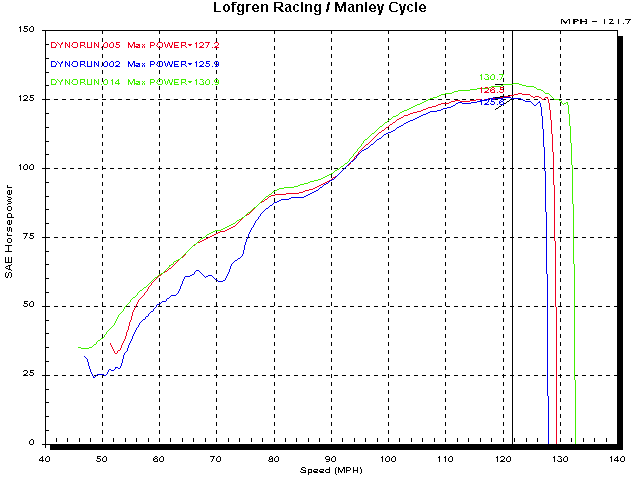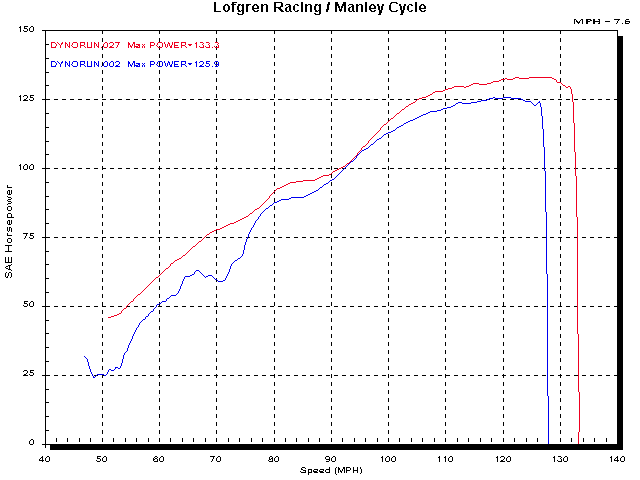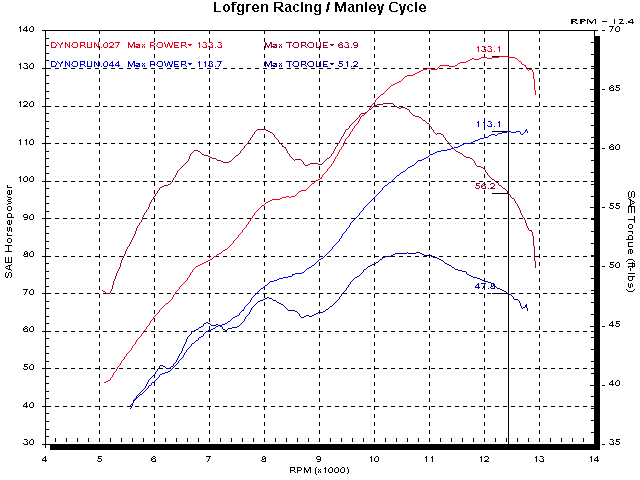
Mapping a Big-Bore MV F4
Some time late in 2002, I saw an article about a 900cc MV F4 in the English bike mag, Superbike. It sounded cool, but reading between the lines, it was clear that it didn't run properly. At the time it was just another bit of information that would be lost in the 'pile' of bits.
When I see that kind of stuff, I want to tell someone that I can fix it. After all, it's what I do!
Manley Cycle has been attending the Cycle World show in Minneapolis for three years. The exposure has been good for us. We've been the only vendors 'hawking' performance, each year.
Across the aisle, sat the Benelli. The Superbike article had mentioned that Superbike Racing was the manufacturer of the 900 kit, and they are also, the Benelli distributor. During the weekend both Tom Manley and myself mentioned to George (who works for Benelli U.S.) that we can create a map for that combination. To our surprise, George admitted that it could use some work. Usually, the folks associated with the 'cool shit' are so personally invested in it that they can't admit that it could stand improvement.
George followed up and we scheduled for it to be mapped in mid-March.
Arming Oneself With Information
In preparation for the 'big-day' I asked Duane Mitchell (Ultimap plc) if he had an FIM compatible chip for the MV. He did.
The first step would be to adjust the chip for the roughly 20% increase in fuel that the big-bore should need. That's a sizable increase considering that the fudge factor for injector sizing is to leave a 20 to 25% duty-cycle margin.
Before increasing the injector time I looked at the map that I had done for the stock MV F4 and discovered that the thing was already over 100% duty cycle at 11,000 RPM!
At 11,000RPM there is 5.45 millisecond per revolution. With 2 revolutions for a 4-stroke cycle, that makes 10.91 milliseconds of time available. The map I had created for the stock MV calls for 11.5 ms. That exceeds 100% duty cycle.
When I checked the A/F ratio it was clear that it went a little lean there, and it hadn't gotten richer when I increased the injector time (the last dyno run.)
I called Chuck at Eastern Cycle to have him check the Weber part number on an MV injector (we don't have MVs in the shop at all times like Eastern does.)
The Alpha-Weber spec sheet says that injector has a flow capability of 2.92 grams/second at 3 Bar fuel pressure. Let's see how that fits!
The stock F4 makes 114 (on my dyno.) There are losses between the crankshaft and the rear wheel. They might be as high as 20%. That means that the power 'at-the-crank' would be 142.5HP.
A conservative brake specific fuel consumption figure (typically stated in pounds per horsepower per hour) would be .55 lbs/HP/hr. (4-strokes can be as low as .44 lbs/HP/hr and higher, typically .5 is used.) That's 78.4 pounds of gas per hour.
There are 4 injectors. That makes 19.59 pounds per hour per injector.
There are 453.59 grams per pound.
That's 8887 grams per hour. Divide by 60 and by 60 again (hours to minutes, minutes to seconds) and you have 2.468 grams per second. Remember the injector is rated at 2.92 grams per second.
Finally, remember that the torque at the HP peak is lower than at the torque peak. In this case, the torque is 8% higher at the torque peak, so the injector needs to supply at least that much more. That would be 2.66 grams per second. Awfully close to 2.92.
A standard injector sizing equation includes a factor of 75 or 80% for max duty cycle. Part of that is to account for the torque rise in the previous sentence.
If any of these calculations are conservative it indicates that the injector is marginal for a stock MV F4. In fact, the numbers must be conservative because the map has called for more than 100% duty cycle at 11,000RPM.
Time for Bigger Injectors
Am I glad I checked? As we say here in Minnesota 'you betcha'!
'If you don't check your work, you can assume it's perfect' where have I heard that?
We ordered and recieved the new injectors. After a baseline run of the bike as it arrived, I changed the injectors.
(The tach pick-up didn't get a very good signal until after I changed the injectors, so comparisons with the baseline have to be displayed with MPH on the X axis.)
Then, make the changes to the map and throw the chip at the computer.
That can be scary because there have been many, major changes. But, again, a little calculating goes a long way.
Below you can see that the first iteration is a little better than the baseline.

Also, the FIM compatible chip makes the job much easier. I can add or subtract fuel to get a usable map the first time. Dynorun.014 is the result of Zone changes of the first map.

Then I transfer the fuel changes to the next chip file and we have a pretty good starting point.
Below is the final result after getting the fuel right and adjusting the timing. Notice how much smoother the curve is at the bottom.

Keep in mind that the dyno charts don't say anything about part throttle behavior. I spent a lot of time getting the rest of the map right.
The drivability is excellent at all RPMs and throttle positions.
Brad Black suggested that I show a stock MV F4 compared to this big-bore version.
Through the RPM range it has as much as 30% greater power. That's from a 20% larger engine. The extra compression explains that.

At the power peak, the increase is 17%. That implies that the 900 kit is taxing the breathing capability of the engine.